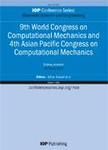版权所有:内蒙古大学图书馆 技术提供:维普资讯• 智图
内蒙古自治区呼和浩特市赛罕区大学西街235号 邮编: 010021

作者机构:University POLITEHNICA of Bucharest Faculty of Materials Science and Engineering Splaiul Independentei nr.313 Bucharest Romania Central University Emergency Military Hospital Bucharest Romania University of California Davis Department of Electrical and Computer Engineering Davis CA 95616 USA
出 版 物:《IOP Conference Series: Materials Science and Engineering》
年 卷 期:2020年第877卷第1期
摘 要:Traumatic brain injury is the leader in the ranking of mortality and invalidity. The surgical repair of a defect of the skull by cranioplasty has been practiced since ancient times, when materials of non-biological origin were used for this purpose. New materials and processes are sought to improve osseintegration of implants. Like any surgical procedure, cranioplasty involves complications that may be related to the surgical technique and/or to the patient s tolerance to the material used. This work described a biocompatible medical device that include two supported meshes for providing mechanical strength and osseointegration properties of the implant, and a multiplayer porous material in between them that is loaded with the required bioactive antibacterial compound to promote a controlled and sustained release of the pharmaceutical agents at the site of surgical intervention. To increase osseointegration, meshes are designed with an open structure and coated with biocompatible materials such as hydroxyapatite. The composition gradient in the multilayer porous material is attained by loading successive layers of porous material with different amounts of bioactive materials and then stacking them to create a gradient of composition across the porous material.